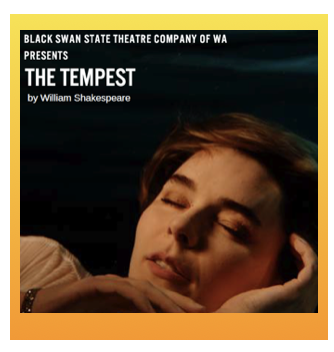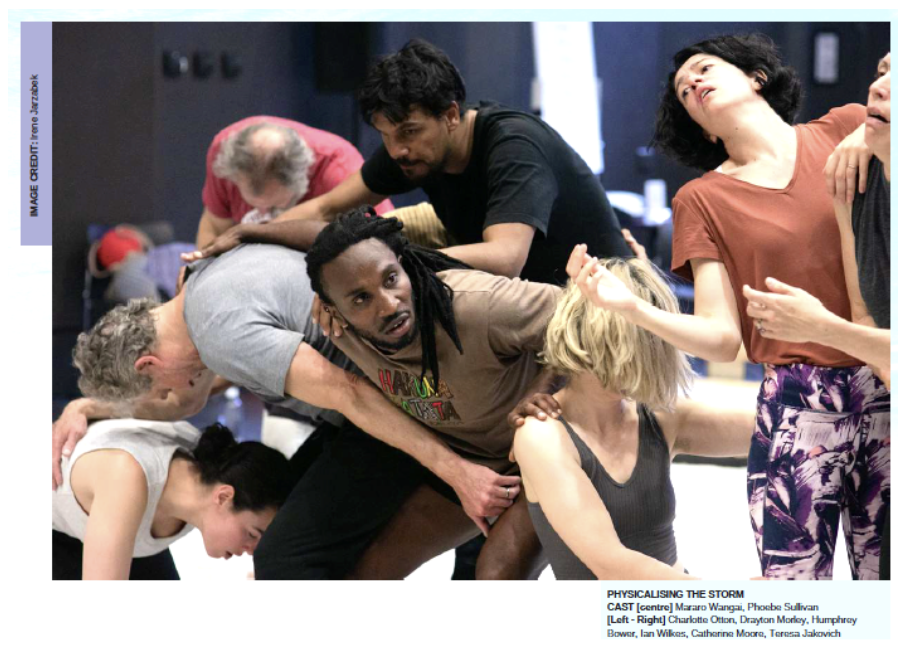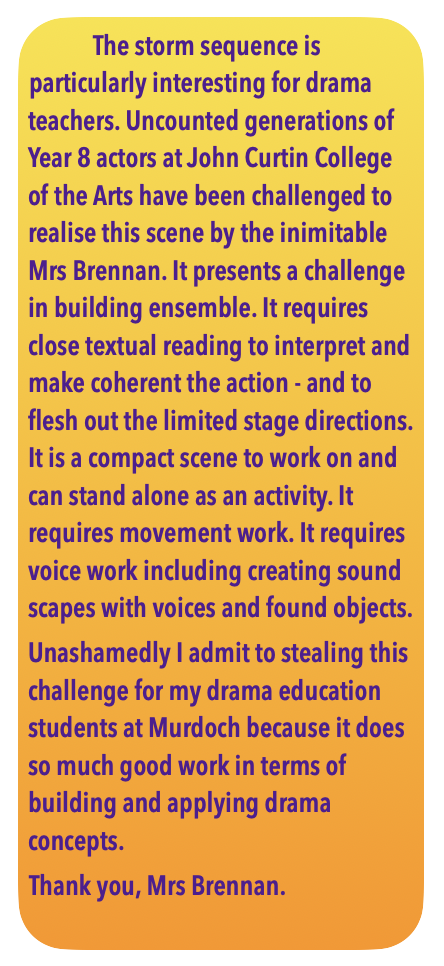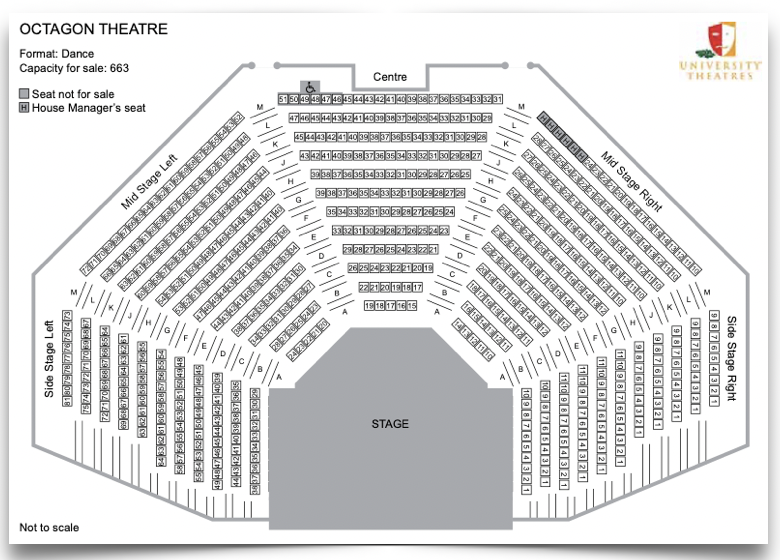Drama Tuesday - The Tempest in contemporary times
/A circular strand of white sand fills the stage when you enter the Octagon Theatre for the Black Swan State Theatre Company production of The Tempest (directed by Matt Edgerton). The familiar thrust stage has been expanded and reshaped. A crescent moon pit is slashed into the sand.
Cast members meet and greet the audience as they enter. They are skilfully collecting items from the audience to provide the props for the play – a jacket is borrowed to be Prospero’s magic cloak; a book for Prospero’s library; jewellery to be Miranda’s treasure (carefully buried in the sand; from the start the mood of audience participation is built.
The action starts with the audience invited to join the sea shanties being sung. An invitation taken up with gusto.
The strength of this production is in the ensemble.
The welcome to country is shared on the voices of the cast. A cohesive ensemble of actors and audience is reinforced as the audience are invited to join the cast in breathing deeply - a ritual three times – signalling the start of the play.
From Teacher support notes
The action pitches immediately into the storm on board the ship cast into the storm by Prospero’s magic incantation. Immediately the strength of the ensemble work is evident with a skilfully evoked creation of the ship and the bodies in turmoil. Fluid, disciplined and powerful images created. Beautiful and strong. Set the action at a cracking pace. The whole production runs at just over 100 minutes without interval.
Into the exposition scenes – so much back story – handled with efficiency. Always a challenge but again the ensemble successfully created images using bodies to support. The level of ensemble was sustained throughout.
The other design element introduced from this point was the continual drizzling of sand from above the action, a fine thin drifting caught in the light beam – a metaphoric hour glass reminding us of the play’s themes.
The lighting of the production deserves special mention. It added significantly yet subtly to the unfolding action and shifting moods including the threatening and fantastical. It complemented the neutral and sand coloured costuming adding to the sense of “found” objects.
The music is created live (mostly) throughout the production incorporating the skills of the ensemble – the composer (Pavan Kumar Hari) playing a range of instruments - as well as a lithe Ariel – joined by Didge, tapping stick and haunting clarinet played by cast members. The vocal work was mostly strong and clear but there were some concerns. The strong vocal training shown by most of the cast needed to be evenly evident for all. Perhaps the super chilled theatre air conditioning was also playing havoc on some.
In tune with contemporary times, there was diversity in the casting. There are also gender/name changes.
Seeing The Tempest again (it is such a familiar and memorable text for me) reminded me of some key points. Successful productions of The Tempest t hinge not so much on the plot – which is cartoon-esque. It relies on recognising the emotions at play. What drives Prospero must be a sense of anger and bitterness that shifts to forgiveness. The play must begin with his sense of outrage and pain driving him to fury the storm on his political opponents, to hold Ariel as captive, to imprison Miranda in ignorance, to punish and humiliate Callan so cruelly. His journey must show the recognition that anger is an insufficient emotional response. Forgiveness is necessary.
The handling of the always difficult opening of the fourth act – the Masque – is interesting and innovative. The cast sit and watch projected a series of vignettes from audience members in the foyer before the show (presumably they will be fresh each performance). There were loud guffaws from audience members as some are recognised, perhaps to the point that we lost what was being said. This inclusion of audience is not surprising – it is a hallmark of Black Swan under Artistic Director Clare Watson. It will be interesting to see how this innovation works for the rest of the season. There is an issue for me about this: the purpose of the Masque in the text is to signal the significant shift in Prospero’s attitude. He shows that he can find compassion for Miranda and Frederick and the cruelty of his punishing them. That, in turn, leads to his later forgiveness of those who plotted against him and landed him on this island. It extends to his freeing of Ariel.
For me The Tempest must hinge on the character journeys of each and we must sense the shifts in Prospero most of all. The triangular relationships between Miranda, Frederick and Caliban also need to be evident. Caliban is more than a threat to Miranda, he is a rival to Frederick. The insecurities of political life and intrigue – echoed in the comic characters – also need to be more than plot devices. The bed of vipers or politics need to be evil under the cloaks of civility. There needs to be productive tension and sense of threat underpinning the comedy of the drunkards plotting with Caliban. They could unhinge Prospero’s magic.
This is a production that drama teachers – and their students – should see. It is a wonderful example of ensemble. It presents interesting design, music and movement opportunities that should inspire. It is successful and enjoyable. It can bring our students into the under used Octagon theatre and remind them of the challenges of space and design.
The other point of note, is that this production was staged by Black Swan following an invitation to audiences to nominate which Shakespearean play would conclude the season. It is a fitting and interesting choice in these times when there is so much clamour about “rigged elections”.
The Teacher Support Notes for the production are again wonderful and useful.
Postscript
With a little flutter of the heart I recognise that it is 50 years since The Octagon was opened and around that amount of time since I was a student sitting in first year lectures in this space. The passing parade of lecturers –two sessions early and late – are somehow etched into the walls (though the seats have been renovated from the utilitarian hard padded benches.
We watched in fascination as the floor of the stage creaked as Dorothy Hewett paced her lectures (while her partner Merv Lilly sat in the back row as a grim reminder to any would-be interjections). Dorothy always put on a good show – opening her Ibsen lecture with the actress Pat Skevington emerging from the wings with pistol.
The history of how a University on this side of the world in what is still sometimes called the most isolated capital city int he world, came to have a theatre designed by the famous Tyrone Guthrie is often told. There was a time when the University of Western Australia was ground breaking for drama and theatre education. It should not be forgotten that The New Fortune Theatre which sits inside the courtyard of the Arts Building is a full-scale replica of the Fortune Theatre from London.
In all there are five full theatre venues on this campus: The Octagon, The New Fortune, The Dolphin, the Sunken Garden, Winthrop Hall (not forgetting The Somerville now used for Festival Films but originally for performances). What drama courses are taught at UWA in 2021? What has been lost in the world of the contemporary academy? Too much.
The Octagon is still a warm and inviting performance space, vastly under-utilised for purpose.









